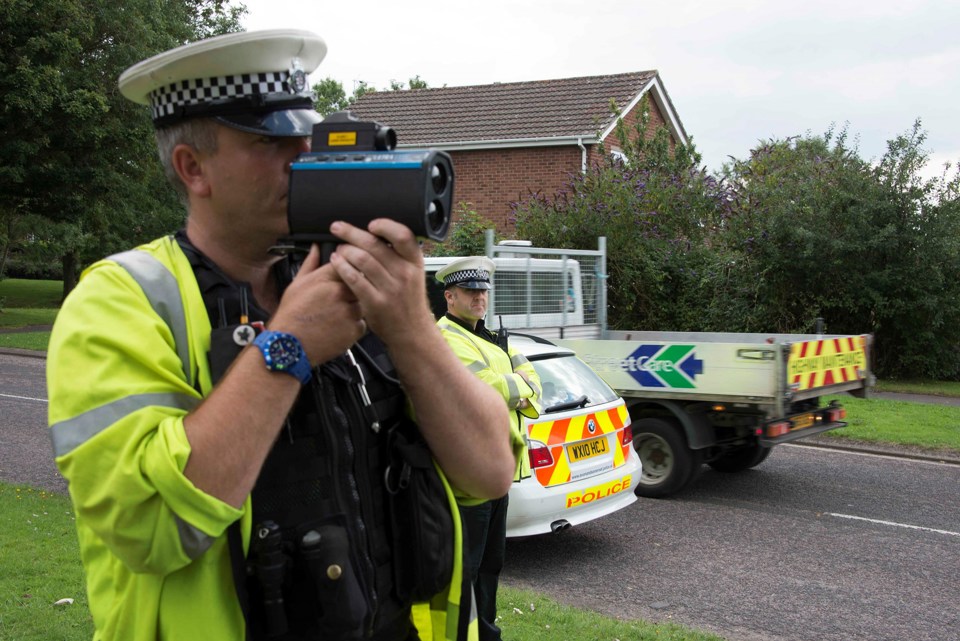West Yorkshire has the highest number of speeding offences in the UK with 181,864, followed by Avon and Somerset (159,210) and Thames Valley (145,447), new figures show.
The data, compiled by vehicle finance provider Moneybarn from Department for Transport (DfT) statistics), reveals which areas have the highest number of motoring offences and which offences are the most common.
West Yorkshire Police has employed a series of successful safe driving campaigns to tackle the issue of speeding across its cities, which may explain the high number of speeding tickets issued.
It was also quick to announce it was carrying out increased enforcement activity on its roads, specifically in areas where speeding is a problem, as the coronavirus lockdown was lifted.
Chief Inspector Lisa Kirkland, head of West Yorkshire Police’s roads policing unit, said that during lockdown, even though traffic was down 70%, there was an increase in speeding, with 588 speeding tickets issued in April.
“Going over the speed limit can have fatal consequences for the person driving the car, passengers and others on the road,” she said.
“Our NHS colleagues are already under extreme pressure – it is important, more than ever, that drivers do not add to this.
“This year, we have more dedicated roads policing officers working on the roads of West Yorkshire to prevent the devastation that speeding can cause. We will not tolerate people risking their own and others road users’ lives by speeding.”
Motoring offences include but are not limited to speeding, careless driving, not wearing a seat belt, use of hand-held devices and insurance offences.
They are categorised as either minor or major and come with their own set of penalties, ranging from an on-the-spot fine to points on your licence or even a prison sentence for the most severe offences.
Moneybarn’s analysis shows that London Metropolitan drivers received the largest number of fixed penalty notices (FPNs) for motoring offences (233,782) – the equivalent of 640 notices issued each day.
West Yorkshire (198,188) and Avon and Somerset (162,726) followed closely, in second and third places respectively.
Speeding offences (144,126) were the main contributing factor to London Metropolitan’s high number of FPNs. Followed by ‘neglect of traffic direction’ offences (34,674) and insurance offences (20,588).
Motoring offences have long been a problem in London, with local police forces regularly implementing new strategies to tackle road danger and enforce its traffic laws.
For example, the Vision Zero action plan in 2018 and the Metropolitan Police’s recent Road Crimes Team launched in March and aimed at tackling London’s most dangerous drivers.
In contrast, Welsh police force areas dominate the bottom 10 for the lowest number of FPNs issued for motoring offences, with Gwent, Dyfed Powys and North Wales all featuring. County Gwent drivers’ triumph, with just 1,874 FPNs issued overall.
Gwent drivers received low numbers of FPNs across most motoring offences, noise offences (2), vehicle registration offences (55) and seat belt offences (125).
Wiltshire (2,605) and Dyfed Powys (2,851) also feature among the police force areas with the lowest numbers of FPNs issued, in second and third places.
Northern Ireland (20,968) also features in the bottom 10 areas with the lowest number of FPNs issued due to motoring offences. However, driving without insurance is the number one motoring offence in Northern Ireland, with over 8,500 FPNs issued as a result.
When analysing the number of offences across all areas Moneybarn found that speeding is the number one offence in the UK, with over 2.3 million FPNs issued.
Tim Schwarz, head of marketing at Moneybarn, said: “It’s always surprising to see such a high number of UK motorists receiving driving fines, despite the Government’s efforts to implement stricter penalties for offending drivers.
“It’s clear more needs to be done by the relevant authorities to bring these numbers down. However, motorists can also play their part in tackling dangerous driving by reporting any incidents they see to their local authorities.”
To find out more, full data analysis can be found here.






















Login to comment
Comments
No comments have been made yet.